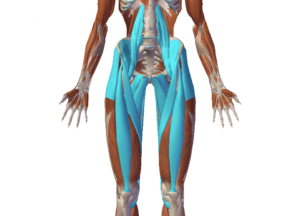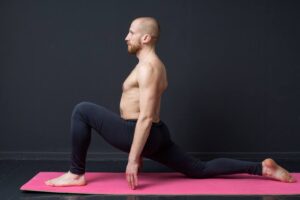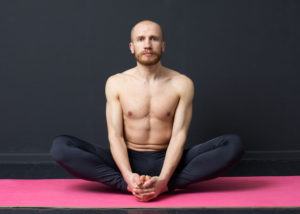At least a handful of times a week, I will assess someone suffering from hip or knee pain that is caused by their hip flexors. I’m sure if you think hard enough, you’ve surely heard someone say, “I pulled my hip flexor” or, “my hip flexor is bugging me today” or even, “I have tight hip flexors”. Most hip flexor pain is easily addressed by stretching, but most people don’t know how to stretch them correctly. If you or someone you know suffers from hip pain, keep reading to find out how!
FIRST, WHAT IS A HIP FLEXOR?
To put it simply, a hip flexor is a muscle that decreases the angle between your thigh and stomach. In standing or sitting, if you were to lift your knee to your chest you are flexing your hip.
These muscles are extremely important for walking, running or pretty much any movement involving the legs.
CAN YOU NAME THEM ALL?
What most people don’t know is that there are actually TEN hip flexors. Yes, that’s right, TEN!
They are as follows:
Primary hip flexors: Iliacus, Psoas, Tensor Fascia Lata (TFL), Sartorius, Rectus Femoris
Secondary hip flexors: Pectineus, Adductor Brevis, Adductor Longus, Gracilis, and last but not least, Adductor Magnus.
Right now, you are probably thinking, “WOW, that’s a lot of different muscles, how am I going to stretch them all!?”
Don’t worry. In 3 moves, if done correctly, you can stretch them all!
THE KEY TO A PROPER HIP FLEXOR STRETCH:
Before I jump into the stretches, there is one key move that you need to know how to do for the first two stretches to be effective. The move is a posterior pelvic tilt, also called a backwards pelvic tilt.
You can complete a posterior pelvic tilt in any position, but if you are unfamiliar, it is best to start with lying on your back with your knees bent up and feet flat on the floor.
To tilt backwards, tuck your bum or pelvis underneath you, flattening your back so that it touches the ground. You will need to hold this move during the first two stretches for them to be effective.
STRETCH #1: THE HURDLE STRETCH
This stretch is effective for the following muscles: Iliacus, Psoas & Tensor Fascia Lata.
To stretch this group you will need to get into a “high kneeling” position as indicated above in the picture. An important note is that the BACK hip is the one being stretched.
Once you are in the position above, perform your posterior pelvic tilt that I mentioned previously, and then SLOWLY lean your body forwards without losing the posterior pelvic tilt. Keep your back in neutral and body upright. If you have to lean forwards more than several inches to feel the stretch then you have likely lost the posterior pelvic tilt and you are doing the stretch incorrectly. In most cases, the pelvic tilt is enough to feel the stretch without even having to lean the body forwards.
STRETCH #2: THE “QUAD STRETCH”
This stretch is effective for the following muscles: Rectus Femoris, Sartorius and Tensor Fascia Lata.
Classically, this stretch is done for the quadriceps but with one key move (hint: we learned about it above), we will bias the stretch to the hip flexors. In standing, (hold onto something for balance), bend the knee you want stretched behind you and grab your foot with the hand on the same side. Perform your posterior pelvic tilt and then bring the knee as close as you can to your bum to feel the stretch. Try the exercise again without the pelvic tilt and you will notice that you feel the stretch in a different area.
STRETCH #3: THE GROIN OR ADDUCTOR STRETCH
This stretch is effective for the ADDUCTOR group of muscles, which are better known as the groin muscles: Pectineus, Adductor Brevis, Adductor longus, Gracilis and Adductor Magnus.
You are likely sick of hearing about the posterior pelvic tilt, so the good news is that you don’t need it for this stretch!
For this stretch, sit on the floor in what I call the “butterfly” position as below. Put the feet together with your knees out to the sides. Hold your feet, place your elbows on your knees and gently pull your knees down to the floor as you push your elbows down onto your knees.
CONCLUSION
And there you have it, 10 muscles stretched in 3 moves! There are many variations to the above moves but these 3 stretches are effective if done correctly.
I shoulder mention that I like to hold each stretch for 10 seconds, for a total of 10 times, but three 30 second holds will work as well.
Keep in mind that not all hip flexors need or should be stretched; in fact some should be strengthened. As always, I recommend getting a thorough assessment to determine if you need stretching or strengthening and specifically which muscle(s).












